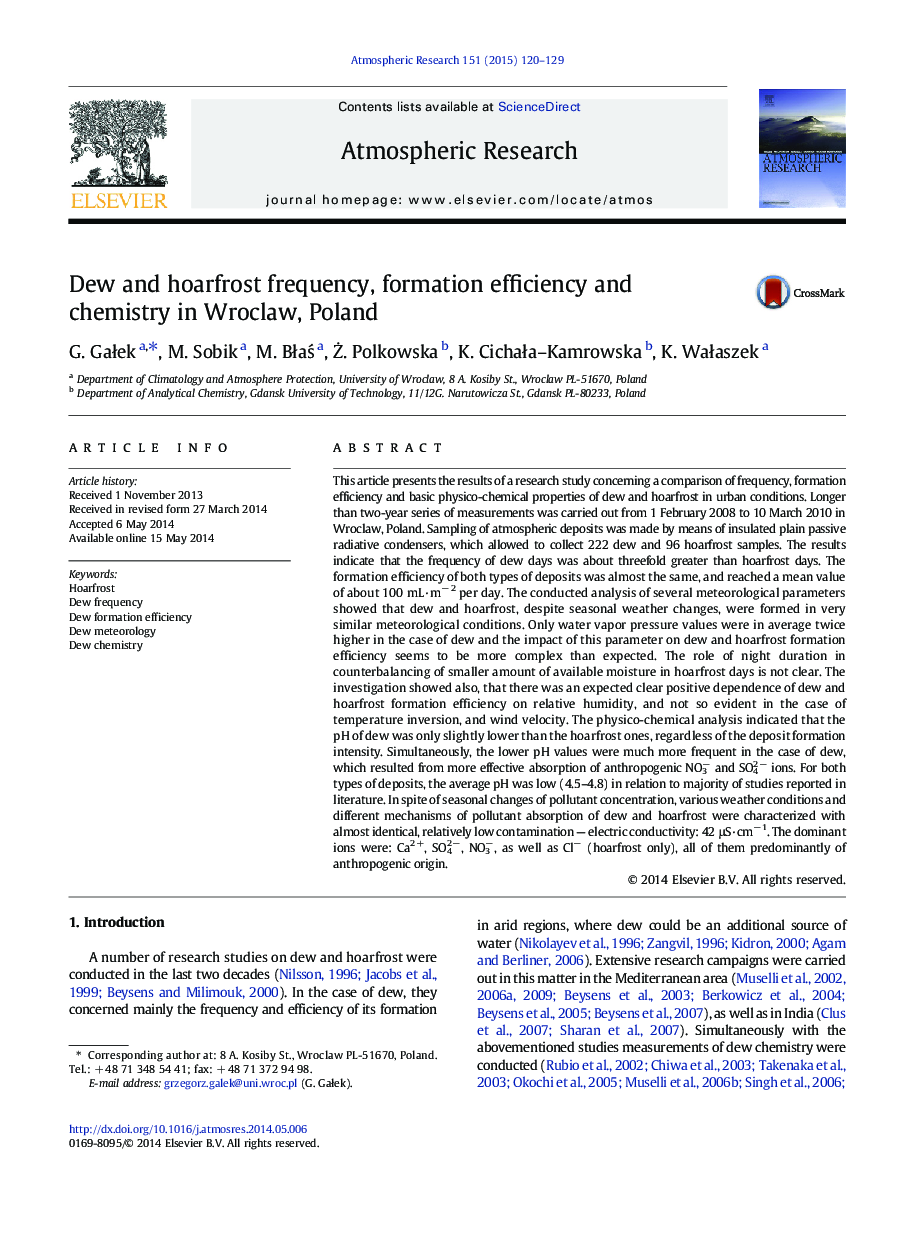| کد مقاله | کد نشریه | سال انتشار | مقاله انگلیسی | نسخه تمام متن |
|---|---|---|---|---|
| 4449778 | 1620522 | 2015 | 10 صفحه PDF | دانلود رایگان |

• Dew and hoarfrost frequency, formation efficiency and chemistry have been compared.
• Key meteorological parameters are only slightly different for dew and hoarfrost.
• Dew and hoarfrost are characterized by similar average formation efficiency.
• Pollutant concentration is very similar for dew and hoarfrost.
• Dew is characterized by distinctly lower pH than hoarfrost.
This article presents the results of a research study concerning a comparison of frequency, formation efficiency and basic physico-chemical properties of dew and hoarfrost in urban conditions. Longer than two-year series of measurements was carried out from 1 February 2008 to 10 March 2010 in Wroclaw, Poland. Sampling of atmospheric deposits was made by means of insulated plain passive radiative condensers, which allowed to collect 222 dew and 96 hoarfrost samples. The results indicate that the frequency of dew days was about threefold greater than hoarfrost days. The formation efficiency of both types of deposits was almost the same, and reached a mean value of about 100 mL·m− 2 per day. The conducted analysis of several meteorological parameters showed that dew and hoarfrost, despite seasonal weather changes, were formed in very similar meteorological conditions. Only water vapor pressure values were in average twice higher in the case of dew and the impact of this parameter on dew and hoarfrost formation efficiency seems to be more complex than expected. The role of night duration in counterbalancing of smaller amount of available moisture in hoarfrost days is not clear. The investigation showed also, that there was an expected clear positive dependence of dew and hoarfrost formation efficiency on relative humidity, and not so evident in the case of temperature inversion, and wind velocity. The physico-chemical analysis indicated that the pH of dew was only slightly lower than the hoarfrost ones, regardless of the deposit formation intensity. Simultaneously, the lower pH values were much more frequent in the case of dew, which resulted from more effective absorption of anthropogenic NO3− and SO42 − ions. For both types of deposits, the average pH was low (4.5–4.8) in relation to majority of studies reported in literature. In spite of seasonal changes of pollutant concentration, various weather conditions and different mechanisms of pollutant absorption of dew and hoarfrost were characterized with almost identical, relatively low contamination — electric conductivity: 42 μS·cm− 1. The dominant ions were: Ca2 +, SO42 −, NO3−, as well as Cl− (hoarfrost only), all of them predominantly of anthropogenic origin.
Journal: Atmospheric Research - Volume 151, 1 January 2015, Pages 120–129